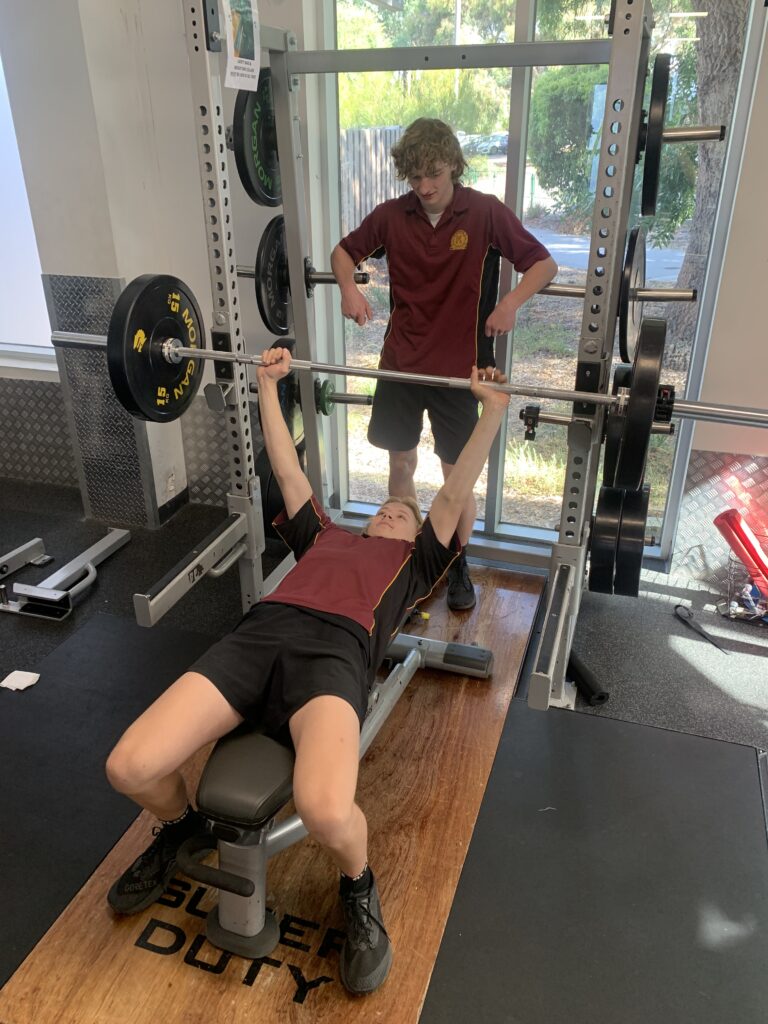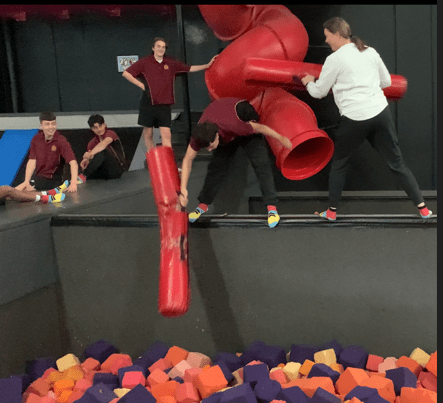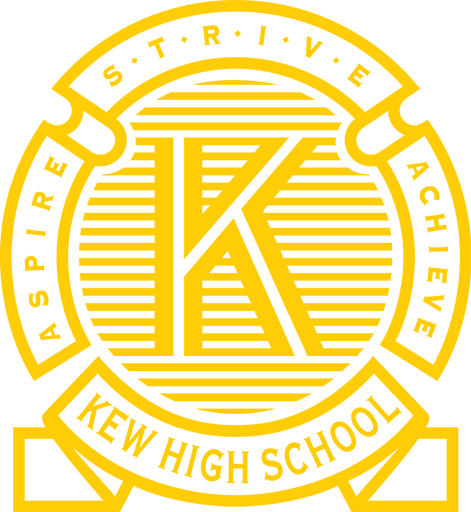By Catherine Gayfer
Leader of Health & Physical Education
During our year 11 PE course we covered the topic of human anatomy and specifically muscle contractions and movements. For this we were able to attend a Pilates class at Strong Pilates in Heidelberg. Both Ben and I thoroughly enjoyed this learn-by-doing activity as it got us sweating and feeling the burn in our muscles. We learnt how our muscles work together during specific actions including bicep curls, rowing and step ups. This was one of the most enjoyable LBD excursions for us out of the whole year and we would definitely recommend attending a Pilates class.
– Fintan and Ben
While learning about the human body in the area of study Musculoskeletal system, we visited Simon Olive at Anytime Fitness Gym in Kew to experience first hand different machine and free weight training exercises that targeted different muscle groups. We learnt about different joints, bones and different muscle contraction types. This opportunity I believe inspired a fair few people in the class to go to the gym, now armed with greater knowledge to apply anatomical terms and movements within their workout.
– Flynn and Jasper

Our Bounce excursion was not just a leisurely adventure but a hands-on exploration of biomechanical principles. We witnessed angular motion, experienced Newton's laws of motion in action, and honed our understanding of balance and stability on the battle sticks. This excursion not only provided us with unforgettable memories but also deepened our appreciation for the physics that govern the world around us, even when we're having fun. It was a perfect blend of leisure and learning, making it an excursion to remember.
– Sam, Jake and Daniel
During our visit to Bounce trampoline park, we applied many different biomechanical concepts learnt throughout the year, allowing us to gain a deeper understanding of the content. We first applied our knowledge of angular motion (back flips on the high performance tramps) and how human motion can either be recognised as linear, angular or general motion. Next we demonstrated Newton’s three laws in action. An example of applying the first law was when we jumped into the air bag off the trampoline: we stayed in motion until we hit the airbag. Also playing the battle sticks involved Newton's first law, which states that an object at rest or in motion will stay that way, unless acted upon by an external force. This concept can be linked to battle sticks as during play, you won't move unless you are struck by your opponent, which is an example of an external force acting on an object that is at rest. Newton’s second law was seen when we played dodgeball. We saw that the acceleration of the ball was directly proportionate to the force applied. And finally Newton’s third law of action/reaction was present when we jumped onto the trampoline and bounced back up. We also learnt about balance and stability and how we can alter our centre of gravity, base of support and line of gravity on the battle sticks activity and how this can have an effect on the game with the right strategies used. For example having a wide base of support, a lower centre of gravity (crouching down) and keeping your line of gravity inside your base of support and over the beam makes it harder to be hit off the beam as you have greater stability. For one of our excursions this year we were fortunate enough to go to Bounce to put what we had been learning into action.
– Ollie D, Will D and Joey G

From household items, we made and labelled a working model of the lungs - this helped us to understand the mechanics of breathing.
– Owais



During a recent practical lesson we went through the biomechanical principles involved in softball (and many other striking sports). We first learnt about aspects of our technique that are important for hitting a ball, including trajectory and angle of release of a projectile. This information helped us to improve our swing, reflecting on where to contact the ball on the bat and at which angle for maximum distance (also which bat type demonstrated a longer third class lever). This practical application allowed us to enjoy the lesson and apply the principle learnt. The class enjoyed the lesson more as they understood how to attain maximum distance by manipulating these variables with their swing.
– Luke H and Connor D
A learn-by-doing activity that we did was pickleball and we applied the theory of Newton’s laws to it. As the pickle ball was light, it travelled more slowly through the air due to greater air resistance, making it easier for people to hit the ball, the rallies last longer and the game more engaging. Relating this to Newton’s second law people could hit the ball with less force and it would still get over the net. If the ball were heavier, it would take more force to get the ball over the net. Applying Newton’s third law every time we hit the pickle ball with the paddle there was an equal and opposite reaction of the pickle ball being pounded off the paddle to the other side of the net. This ‘learn by doing’ activity taught me more about Newton’s laws and how to identify them in sporting examples.
– Cassandra N

